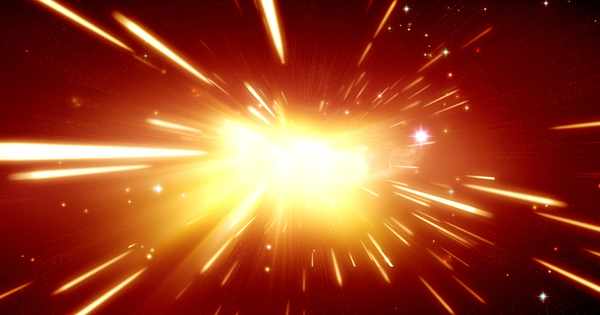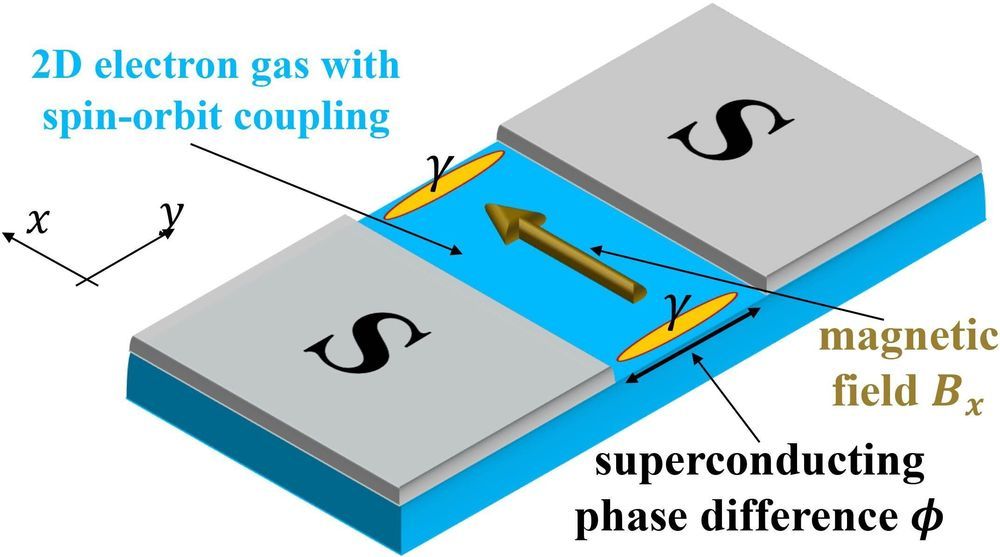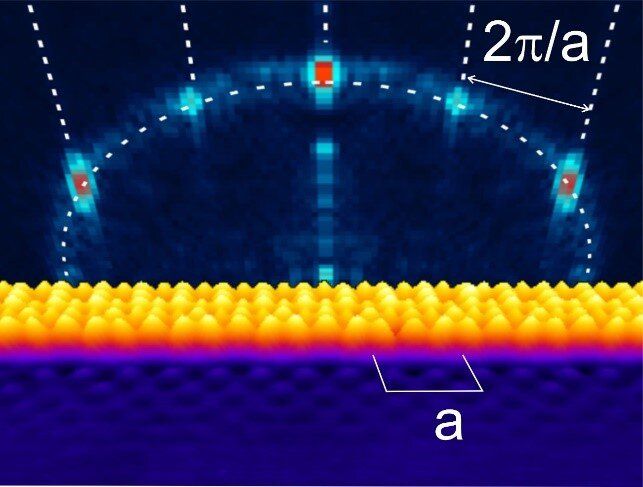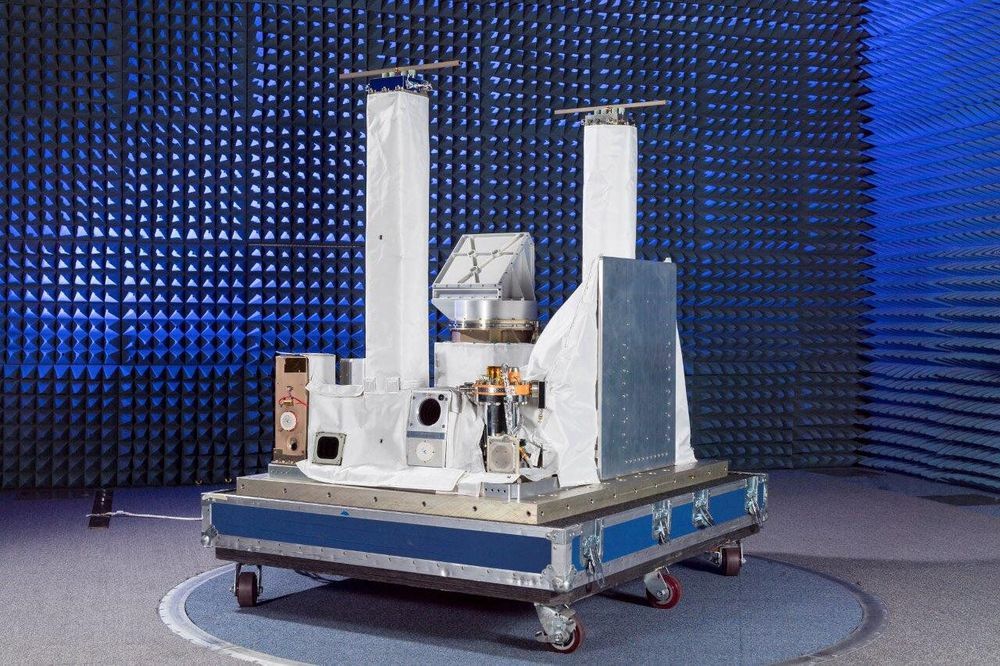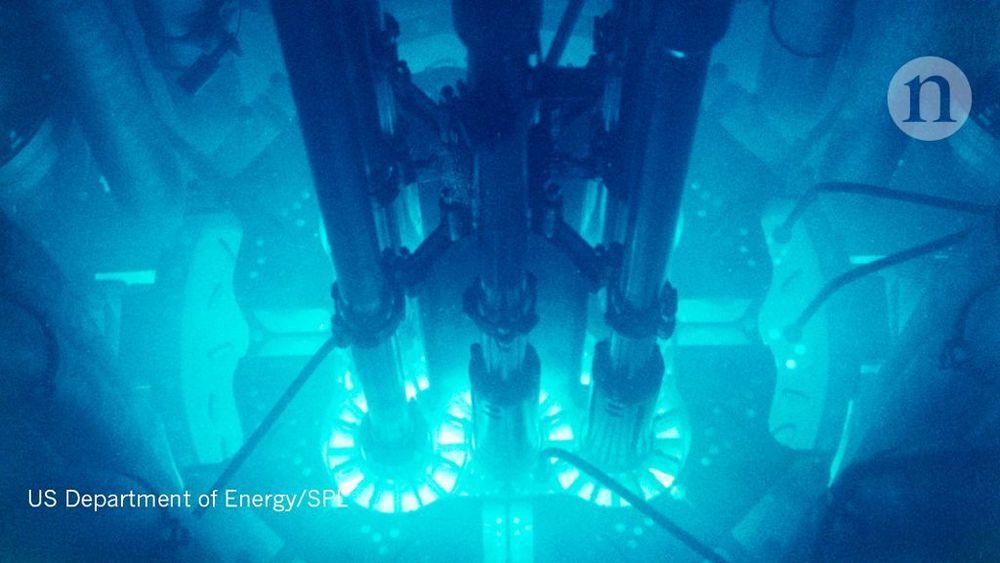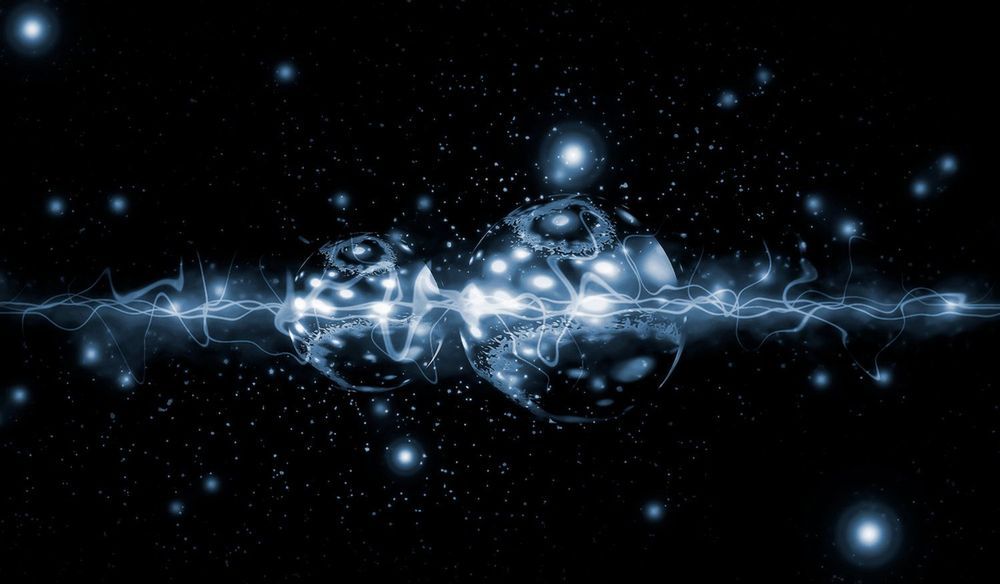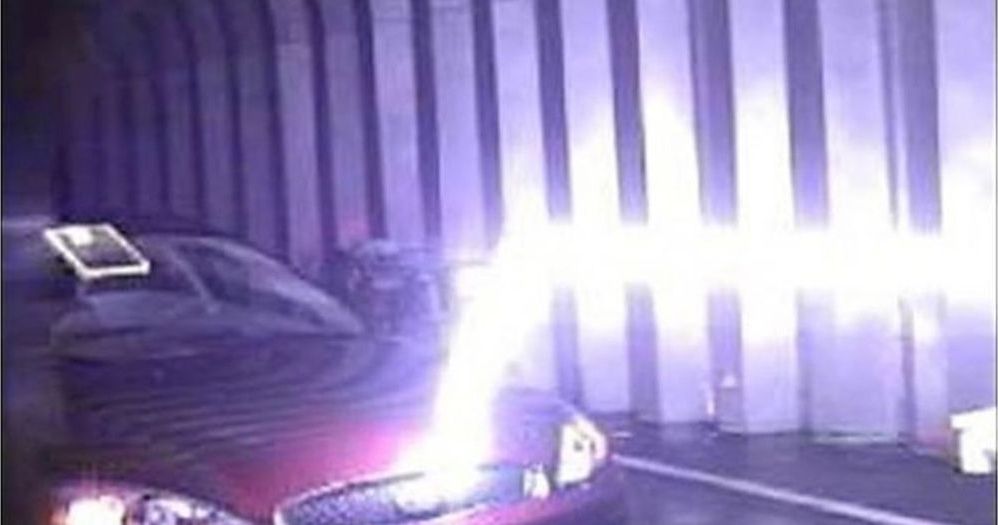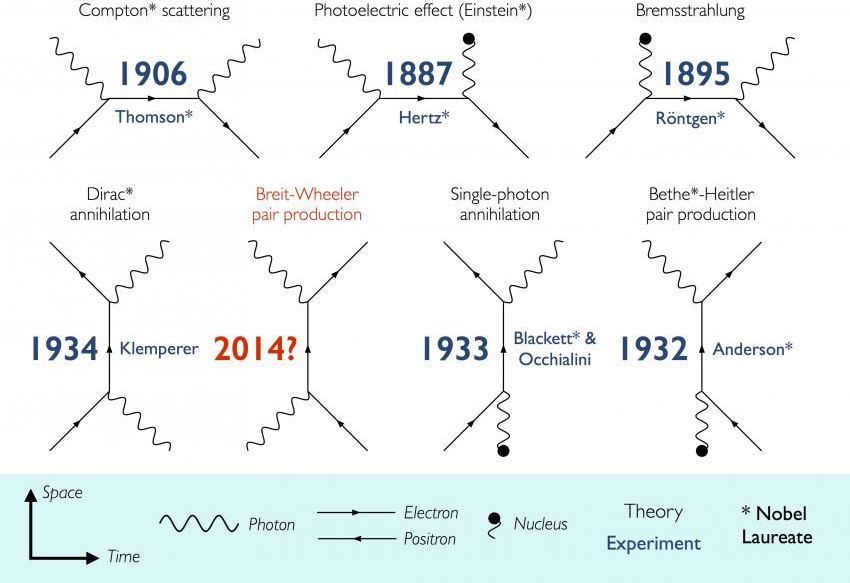Archive for the ‘particle physics’ category: Page 435
May 11, 2019
Oops! Scientists accidentally create new material that makes batteries charge much faster
Posted by Saúl Morales Rodriguéz in categories: materials, particle physics
Some of the most famous scientific discoveries happened by accident. From Teflon and the microwave oven to penicillin, scientists trying to solve a problem sometimes find unexpected things. This is exactly how we created phosphorene nanoribbons – a material made from one of the universe’s basic building blocks, but that has the potential to revolutionize a wide range of technologies.
We’d been trying to separate layers of phosphorus crystals into two-dimensional sheets. Instead, our technique created tiny, tagliatelle-like ribbons one single atom thick and only 100 or so atoms across, but up to 100,000 atoms long. We spent three years honing the production process, before announcing our findings.
May 10, 2019
Computing faster with quasi-particles
Posted by Quinn Sena in categories: computing, particle physics, quantum physics
Majorana particles are very peculiar members of the family of elementary particles. First predicted in 1937 by the Italian physicist Ettore Majorana, these particles belong to the group of so-called fermions, a group that also includes electrons, neutrons and protons. Majorana fermions are electrically neutral and also their own anti-particles. These exotic particles can, for example, emerge as quasi-particles in topological superconductors and represent ideal building blocks for topological quantum computers.
Going to two dimensions
On the road to such topological quantum computers based on Majorana quasi-particles, physicists from the University of W\xFCrzburg together with colleagues from Harvard University (USA) have made an important step: Whereas previous experiments in this field have mostly focused on one-dimensional systems, the teams from W\xFCrzburg and Harvard have succeeded in going to two-dimensional systems.
May 10, 2019
Discrete energy levels without confinement – a new quantum trick
Posted by Quinn Sena in categories: nanotechnology, particle physics, quantum physics
Nanostructures can be designed such a way that the quantum confinement allows only certain electron energy levels. Researchers from IMDEA Nanociencia, UAM and ICMM-CSIC have, for the first time, observed a discrete pattern of electron energies in an unconfined system, which could lead to new ways of modifying the surface properties of materials.
A research group from IMDEA Nanoscience and Universidad Autónoma de Madrid has found for the first time experimental evidence that one-dimensional lattices with nanoscale periodicity can interact with the electrons from a bidimensional gas by spatially separating their different wavelengths by means of a physical phenomenon known as Bragg diffraction. This phenomenon is well-known for wave propagation in general and is responsible for the iridescent color observed upon illumination of a CD surface. Due to the wave-particle duality proposed by De Broglie in 1924, electrons also present a wave-like behavior and, thus, diffraction phenomena. Actually, the observation that low-energy free electrons undergo diffraction processes upon interaction with well-ordered atomic lattices on solid surfaces was the first experimental confirmation of the wave-particle duality.
May 10, 2019
28 years old and closer than ever to the solving of the mistery of the Majorana particles
Posted by Quinn Sena in categories: computing, nanotechnology, particle physics, quantum physics
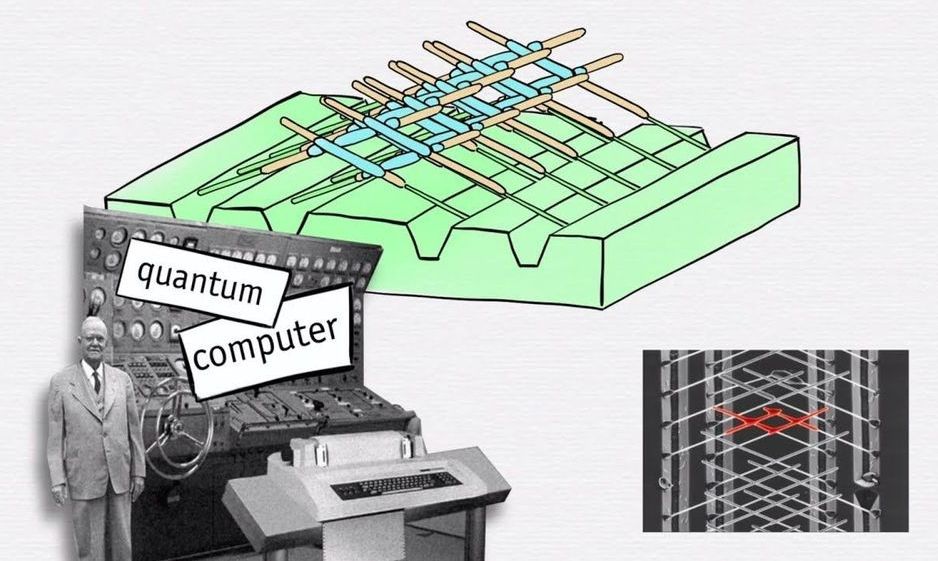
Gazibegović, Ph.D. candidate in the group of prof. Erik Bakkers at the department of Applied Physics, developed a device made of ultrathin networks of nanowires in the shape of “hashtags.” This device allows pairs of Majorana particles to exchange position and keep track of the changes occurred, in a phenomenon known as “braiding.” This event is considered as a striking proof of the existence of Majorana particles, and it represents a crucial step towards their use as building blocks for the development of quantum computers. With two Nature publications in her pocket, Gazibegović is ready to defend her Ph.D. thesis on May 10.
In 1937, the Italian theoretical physicist Ettore Majorana hypothesized the existence of a unique particle that is its own antiparticle. This particle, also referred to as a “Majorana fermion,” can also exist as a “quasiparticle,” a collective phenomenon that behaves like an individual particle, as in waves forming on the water. The water itself stays in the same place, but the wave can “travel” on the surface, as if it were a single particle in movement. For many years, physicists have been trying to find the Majorana particle without success. Yet, in the last decade, scientists from Eindhoven University of Technology have taken great leap forwards in proving the existence of Majorana particles, also thanks to the research of Gazibegović and her collaborations with the University of Delft, Philips Research and the University of California – Santa Barbara.
May 9, 2019
NRL tests sensor on-orbit the ISS to protect space-based assets
Posted by Quinn Sena in categories: particle physics, satellites
Developed by the U.S. Naval Research Laboratory Plasma Physics Division, in conjunction with the Spacecraft Engineering Department, the Space PlasmA Diagnostic suitE (SPADE) experiment launched from Kennedy Space Center in Florida to the International Space Station onboard the SpaceX Dragon resupply mission (CRS-17), May 4.
Integrated onto the Space Test Program-Houston 6 (STP-H6) pallet, SPADE is designed to monitor background space plasma conditions on-orbit the International Space Station and provide early warning of the onset of hazardous levels of spacecraft charging.
The space environment is filled with a collection of electrically charged particles, plasma, and properties that depend on variable solar conditions. Satellite operations in space require continuous monitored plasma conditions and the results it has on spacecraft.
Continue reading “NRL tests sensor on-orbit the ISS to protect space-based assets” »
May 8, 2019
How a particle racing through a vacuum leaves a trail of blue light
Posted by Xavier Rosseel in categories: particle physics, quantum physics
Thanks to a quirk of quantum theory, subatomic particles can emit light as they travel through a seemingly empty vacuum.
Blue-tinged Cherenkov radiation could help to illuminate quantum interactions between light and matter.
May 8, 2019
Antimatter Is Both a Particle and a Wave, New Experiment Confirms
Posted by Quinn Sena in category: particle physics
Antimatter isn’t just made of antiparticles, it’s also made of waves. Now we know that this holds true even at the level of a single antimatter particle.
Physicists have known for a long time that just about everything — light and other forms of energy, but also every atom in your body — exists as both particles and waves, a concept known as particle-wave duality. That’s been shown again and again in experiments. But antimatter particles, which are identical to their matter partners, except for their opposite charge and spin, are much more difficult to experiment with. These twins of matter flit into existence fleetingly, usually in massive particle accelerators.
But now, physicists have shown at the level of a single positron — an antimatter twin of the electron — that antimatter, too, is made of both particles and waves.
Continue reading “Antimatter Is Both a Particle and a Wave, New Experiment Confirms” »
May 8, 2019
Army Demonstrates a Weapon That Shoots Laser-Guided Lightning Bolts
Posted by Quinn Sena in categories: climatology, military, particle physics
Over at Picatinny Arsenal, the research and development facility and proving ground for the U.S. Army’s weaponry, engineers are developing a device that shoots lighting bolts along a laser beam to annihilate its target. That’s right: lighting bolts shot down laser beams. This story could easily end right here and still be the coolest thing we’ve written today, but for the scientifically curious we’ll continue.
The Laser-Induced Plasma Channel (LIPC) can be used to destroy anything that conducts electricity better than the air or ground surrounding it (unexploded ordnance seems a good candidate here). It works off of some pretty basic principles of physics, using a laser to carve an electromagnetic path through the air that accommodates a high-voltage beam. Create that path, crank up the voltage, and your target is toast.
It works like this: a high intensity, super-short duration (maybe two-trillionths of a second) laser pulse will actually use air like lens—surrounding air focuses the beam, keeping the laser pulse nice and tight rather than scattering it. If the pulse is strong enough, it actually creates an electromagnetic field around itself that’s so powerful it strips electrons from air molecules, essentially creating a channel of plasma through the air. Since air is composed of neutral particles (that act as insulators) and the plasma channel is a good conductor (relative to the un-ionized air around it) the path of the laser beam becomes a kind of filament.
Continue reading “Army Demonstrates a Weapon That Shoots Laser-Guided Lightning Bolts” »
May 6, 2019
Scientists discover how to turn light into matter after 80-year quest
Posted by Quinn Sena in category: particle physics
2014 Basically a real replicator could be possible with this discovery.
Imperial College London physicists have discovered how to create matter from light — a feat thought impossible when the idea was first theorised 80 years ago.
In just one day over several cups of coffee in a tiny office in Imperial’s Blackett Physics Laboratory, three physicists worked out a relatively simple way to physically prove a theory first devised by scientists Breit and Wheeler in 1934.
Continue reading “Scientists discover how to turn light into matter after 80-year quest” »
